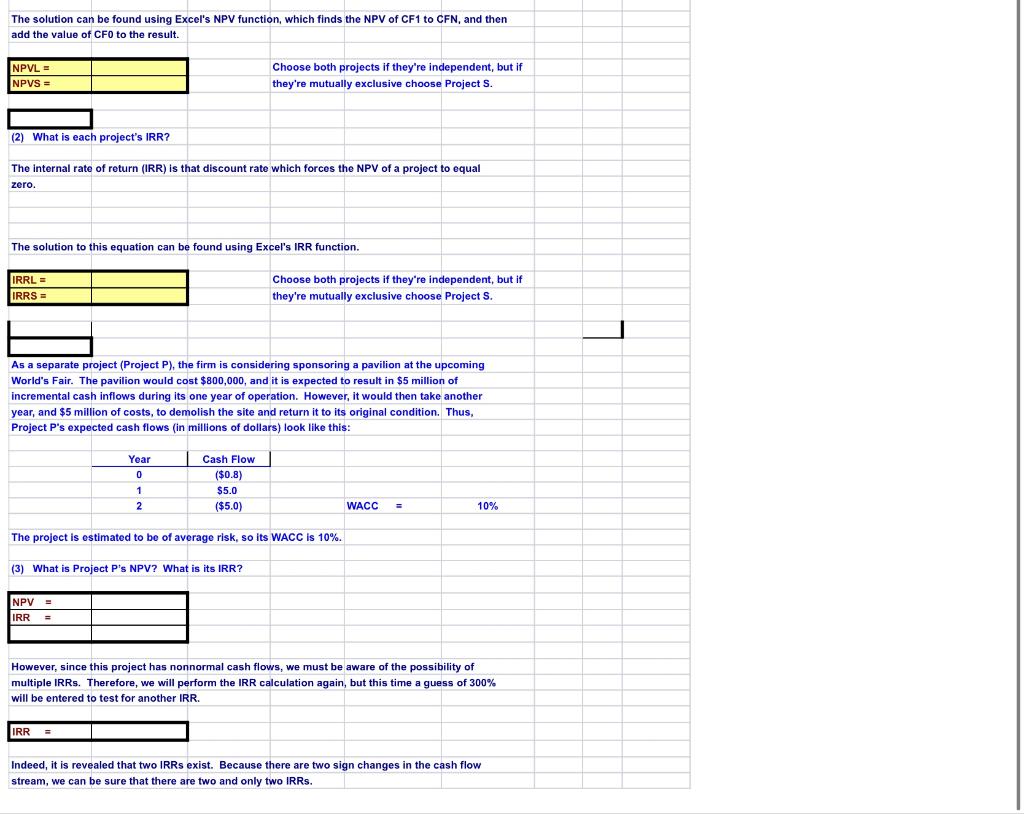

You recently went to work for Allied Components Company, a supplier fauto repair parts used in the after-market with products from Daimler AG, Ford, Toyota, and other automakers. Your boss, the chief financial officer (CFO), has just handed you the estimated cash flows for two proposed projects. Project L involves adding a new item to the firm's ignition system line; it would take some time to build up the market for this product, so the cash inflows would increase over time. Project S involves an add-on to an existing line, and its cash flows would decrease over time. Both projects have 3-year lives because Allied is planning introduce entirely new models after 3 years. Here are the projects' cash flows (in thousands of dollars): Year CFL ($100) $10 CFS ($100) 0 1 $70 2 2 $60 $50 3 $80 $20 Depreciation, salvage values, net operating working capital requirements, and tax effects are all included in these cash flows. The CFO also made subjective risk assessments of each project, and he concluded that both projects have risk characteristics that are similar to the firm's average project. Allied's WACC is 10%. You must determine whether one or both of the projects should be accepted. (1) What is each project's NPV? WACC 10% The solution can be found using Excel's NPV function, which finds the NPV of CF1 to CFN, and then add the value of CFO to the result. NPVL = NPVS = Choose both projects if they're independent, but if they're mutually exclusive choose Project S. (2) What is each project's IRR? The internal rate of return (IRR) is that discount rate which forces the NPV of a project to equal zero. The solution can be found using Excel's NPV function, which finds the NPV of CF1 to CFN, and then add the value of CFO to the result. NPVL = NPVS= Choose both projects if they're independent, but if they're mutually exclusive choose Project S. (2) What is each project's IRR? The internal rate of return (IRR) is that discount rate which forces the NPV of a project to equal zero. The solution to this equation can be found using Excel's IRR function. IRRL= IRRS= Choose both projects if they're independent, but if they're mutually exclusive choose Project S. As a separate project (Project P), the firm is considering sponsoring a pavilion at the upcoming World's Fair. The pavilion would cost $800,000, and it is expected to result in $5 million of incremental cash inflows during its one year of operation. However, it would then take another year, and $5 million of costs, to demolish the site and return it to its original condition. Thus, Project P's expected cash flows (in millions of dollars) look like this: Cash Flow Year 0 ($0.8) 1 $5.0 2 ($5.0) WACC = 10% The project is estimated to be of average risk, so its WACC is 10%. (3) What is Project P's NPV? What is its IRR? NPV = IRR = However, since this project has nonnormal cash flows, we must be aware of the possibility of multiple IRRs. Therefore, we will perform the IRR calculation again, but this time a guess of 300% will be entered to test for another IRR. IRR = Indeed, it is revealed that two IRRs exist. Because there are two sign changes in the cash flow stream, we can be sure that there are two and only two IRRS








